|

75% Complete
Aim
: Prologue : Game
Specs : Screenshots
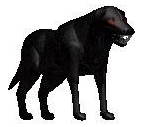 Project
Aim Project
Aim
The aim with Dafel: Bloodline is to create a classic RPG game based
upon gaming styles such as Zelda and the Chaos Engine.
We
decided early on that we would use a retro-style engine full of
action and puzzles, i.e., top down view, in honour of these old
games but add modern approaches to the design, game play and coding.
All of the characters in Bloodline are 3D modelled for that realistic
look. For example, Dafel, our main character, takes up over 400
meg of render data with over 1000 frames of animation.
Using
two engines, adventure and arcade, we have taken the best elements
from adventure games such as examining your surroundings, using
objects and talking to characters, with fast paced arcade action
with 3 different attacking methods and a variety of enemies all
with different characteristics and AI.
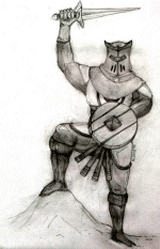 Audio Audio
For Bloodline
we have added effects such as full CD Audio and our own custom FSG
sound system. The FSG [Full Sensual Gaming] audio uses a surround
like style sound system to allow the player to "track"
sounds in the game. For example, imagine you were tracking someone
in a thick forest but could not see them. In Bloodline with the
FSG system, you will be able to "hear" their footfalls
and be able to track them. Sounds are manipulated for left and right
speakers so having a stereo output from your computer is recommended
to play Bloodline correctly.
The
FSG is also used to add "atmospheric" effects to the game.
In conjunction with CD Audio used as background sounds, the FSG
also drives foreground sound effects to add more "feeling"
to each level. For example, imagine you are in a swamp and it is
raining. The CD would be spooling a basic background sound effect
of rain while the FSG drives foreground samples of thunder, this
thunder controlled by the game engine and played relative to your
location or progression on the level.
As
you can see, audio is very important to us.
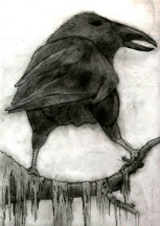 Graphics Graphics
Unlike other games of this genre, we have created our own custom
graphics routines that are "very" fast, even on 030 AGA
machines. Our blitting routines, normally used in 3D engines [c2p],
but used as 2D in Bloodline, by-pass the need to use the AMIGA's
old and slow blitter to draw graphics. Instead we use the raw processing
power of the CPU installed in your AMIGA to render the graphics
to screen, so, the faster the processor, the faster the game can
run. A good side effect of using our own blitting routines is that
all graphics have to be stored in FAST memory, this means we are
not limited to 2meg of graphics memory but as much FAST memory as
you have installed in your AMIGA! We recommend for Bloodline that
you have at least 8meg of FAST mem. This allows us to use a lot
of animation frames for each character in the game. So far, the
average number of frames used for a character is 400! We are also
using 3D effects such as transparency and real-time snow and rain!
Using
our custom blitting routines means that we have the speed and raw
processing power to increase the number of colours on screen. The
AMIGA is limited in speed by the number of bitplanes it can display.
The more bitplanes you use [more colours] the harder it is for the
AMIGA to update the screen so the slower the game. That is why many
old AMIGA games are limited to 128 or usually 64 colours on screen.
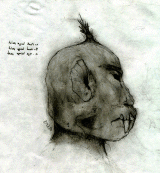 Game
Play Game
Play
Many of the old RPG's ran in a very linear format. Get this to open
a door, talk to this character to give you an item to solve another
puzzle then proceed onto the next task. In Bloodline we have devised
a non-linear method of game play. We still use levels but these
levels do not need to be completed in the same order. You can revisit
locations [levels] as many times as you like until it is completed
or you complete a previous level that allows you to complete another
level [may give you a clue to solve a puzzle].
The
storyline in Bloodline is very strong as we intended to draw the
player into Dafel's world and his dilemma. Throughout the game you
will come across key stages of the plot that will help you to complete
the game. However, as mentioned above, most of the game will be
non-linear and it will be up to you to work out the plot until you
come across a key plot development that will help you along your
way.
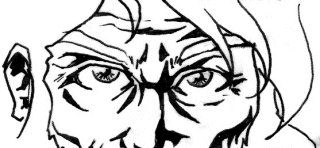
Behind
the plot are also the basic every day things that happen to Dafel
such as earning money to buy food [hunting also], sub-plots to earn
experience, maintenance of sword and armour and so on.
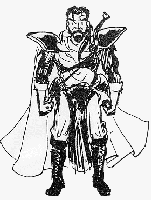 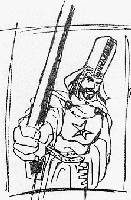 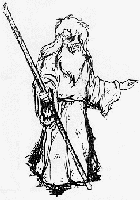

|











